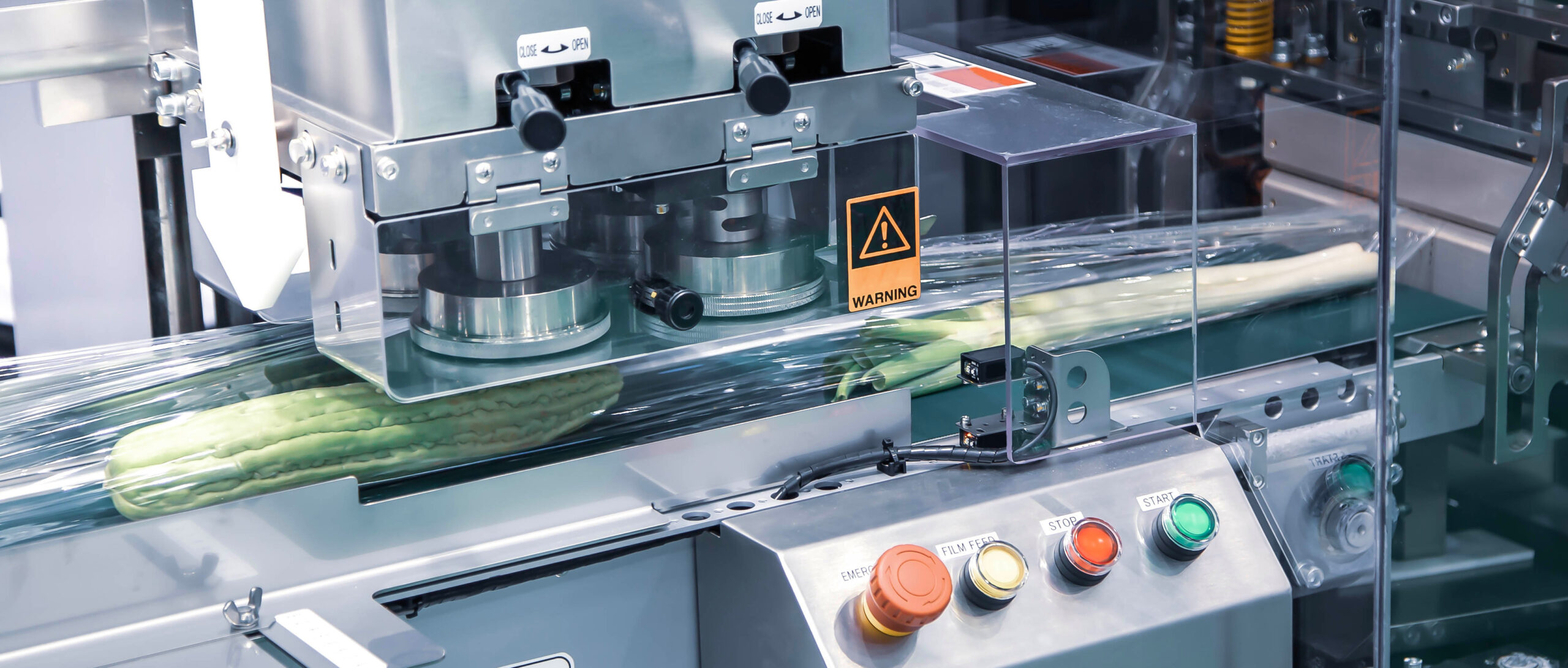Overview:
- Food Traceability Is a Growing Compliance Challenge
- Calculating the Cost of a Food Recall
- Beyond Dollars: Brand Damage
- Don’t Get Burned by Paper-Based Traceability
- Rapid Recall Response with Traceability Tech
- Traceability Survival Tips from the Trenches
- Additional Food Traceability Resources
In 2012, the U.S. Food and Drug Administration (FDA) first exercised new powers granted under the Food Safety Modernization Act (FSMA) to shut down processing at the Sunland Inc. company’s peanut plant in New Mexico. This action occurred after the company sold salmonella-tainted organic peanut butter that was used in hundreds of food products for perhaps as long as two years. The total cost of this recall is believed to have exceeded $1 billion after lawsuits. In 2018, unsanitary conditions at Rose Acre Farms prompted the recall of over 200-million eggs from 17 facilities, the largest of its kind since 2010.
Perhaps that is because these companies were using either paper-based or only partially automated systems. All told, less than 50% of food and beverage companies are fully compliant with current traceability regulations—including the Bioterrorism Act and FSMA. And more recently, FSMA Article 204, which requires batch traceability back to the ingredient-level in raw materials.
This guide is intended to help food manufacturers and distributors:
- Consider the requirements of FDA traceability compliance,
- Calculate the potential costs of a recall,
- Review solutions other companies have used successfully to track food,
- Gain practical advice for how to improve traceability systems and processes, and
- Locate additional resources to help you meet compliance challenges.
Watch Video: How Blue Bell achieved ingredient traceability for ice cream:
Disclaimer: This guide does not constitute legal advice. RFgen Software strongly recommends that any company facing a product recall immediately seek the advice of legal counsel to minimize their financial risk and liability exposure.
Food Traceability is a Growing Compliance Challenge
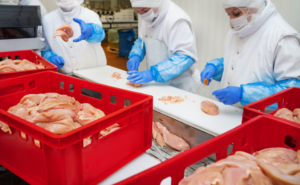
The number of food safety recalls issued by the U.S. government has risen rapidly in recent years. More than 20,000 food recalls have been issued since 2019. In surveys by the Grocery Manufacturers Association (GMA), 58% of respondents’ companies had been affected by a product recall in the last five years.
Two major pieces of food legislation are guiding food traceability rules at most companies:
- 2001 Bioterrorism Act: This law requires food processors to be able to identify the origin of all food—including all ingredients—received by lot, code or other identifier and provide the same information to the FDA upon request within 24-hours. Both civil and criminal actions can be taken in the event of a failure to produce the information.
- 2011 Food Modernization and Safety Act: This law gives the FDA the authority to order mandatory recalls and establish a food product tracing system. The FDA has been conducting pilot studies and gathering industry recommendations to develop food product tracing systems.
Increasing public awareness of recalls and governmental pressure to achieve field-to-fork accountability are likely to produce even more stringent regulations in the future. FSMA Section 204 is only the latest example.
In addition to a reliable ERP system, mobile inventory solutions can reduce the impact of a recall by shortening its duration and limiting the recalled product to only that product that is defective. Reducing the timeline of a recall can mitigate both financial setbacks and integrity losses incurred by a company. Keeping track of product batch numbers, lot numbers, and serial numbers is an excellent precursory initiative that mobile barcoding solutions excel at performing.
ALSO READ: 4 ways mobility can help you overcome traceability hurdles »
38% of companies list inventory traceability as a top challenge, according to the 2022 Digital Inventory Report. The time to improve traceability processes is now.
Calculating the Cost of a Food Recall
If your company is in the food supply chain long enough, chances are good that a product recall will affect your business at some point. The cost of recalling and destroying food products varies according to factors such as the amount of product recalled, labor required, transportation and storage costs, and the geographic distribution of the product.
For companies dealing with a recall, the total direct cost averages $10 million, although many anticipate spending over $100 million in total.
If your company is the manufacturer of the recalled product, government agencies will want to inspect your food safety records and may also need to inspect your operations for safety violations. This can result in fines and penalties for any compliance issues, and in extreme cases, a shutdown of your operations until remedies are made.
During the recall, it is also not uncommon for consumer demand of the recalled product to weaken. For example, when Sunland-produced peanut butter was recalled in 2012, demand for peanut butter temporarily decreased. This costs all manufacturers and distributors of peanut butter—not just the companies dealing with the tainted product. As a result, the total costs can be astronomical in a widescale recall.
See the chart below for a few telling examples:
Real-World Food Recalls and Their Financial Impact
| Company | Year | Recall Cost* | Product |
|---|---|---|---|
| ConAgra Foods, Inc. | 2006 | $287,000,000 | Peanut Butter/ Salmonella |
| JB Tolleson, Inc. | 2018 | $41,500,000 | Meat/ Salmonella |
| Rose Acre Farms | 2018 | $59,000,000 | Eggs/ Salmonella |
| Sunland, Inc. | 2012 | Nearly $1 Billion | Peanut Butter/ Salmonella |
| Westland-Hallmark | 2008 | $500,000,000 | Meat/ Listeriosis |
*Based on published reports.
Beyond Dollars: Brand Damage
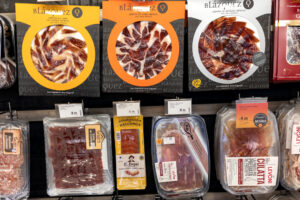
Direct costs are just the tip of the iceberg when adding up the total cost of a recall. Companies face their most harrowing test after the fact when they wait to find out if their brand has been permanently damaged by the news surrounding the recall. A report sponsored by the Food Marketing Institute (FMI) and others cited a Deloitte survey in which 76% of consumers were more concerned about food safety than they were in years prior. 57% or participants stopped eating a food because of a recall.
It’s important for food manufacturers and distributors to get their public relations professionals out in front of the story. In the age of social media and 24-hour news, word will spread quickly about the nature of the recall and how the company is reacting to it. But when handled properly, a recall can actually strengthen customer loyalty.
While customers are greatly concerned about food safety, they also appreciate a company that “does the right thing.” A consumer survey by Princeton University and the Relational Capital Group discovered that companies exhibiting prompt, honest, and selfless action during a recall were rewarded:
- 91% agree that even the best run companies with modern technology can make mistakes that lead to recalls.
- 87% remain willing to purchase from a company they perceive as “honest and responsible” during a recall.
- 93% believe that companies show their “true colors” during a recall.
Don’t Get Burned by Paper-Based Traceability
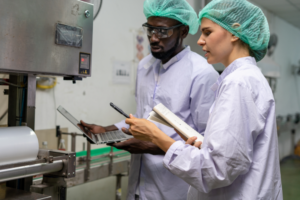
To design a reliable system for tracing food, the first rule is to eliminate paper. Food manufacturers produce in high volume and have rapid inventory turnover, making it virtually impossible to track information with by hand.
Traditionally, businesses keep paper invoices and shipping documents that can take days or weeks—far beyond FDA compliance requirements—to sort through during a recall. However, in today’s regulated climate, a company is expected to take action within hours when food safety is at stake.
Under the FSMA record keeping requirements, a food manufacturer must provide the FDA with requested information within 24 hours or face fines, civil action, and possible criminal penalties.
And yet, some manufacturers still admit to using paperwork exclusively to trace products. Many more have only partial automation, preventing efficient track-and-trace. That means potentially getting burned during a recall.
In the event of a large recall, a manufacturer can expect consumer lawsuits to follow. Attorneys will highlight how long it took the manufacturer to respond and whether that response was adequate. If action was delayed due to inefficient processes, it will not play well with a jury. Imagine losing a giant class action lawsuit because no one could find a few pieces of paper!
YOU MAY LIKE: Three Smart Manufacturing Trends for the Food and Beverage Industry »
Rapid Recall Response with Traceability Tech
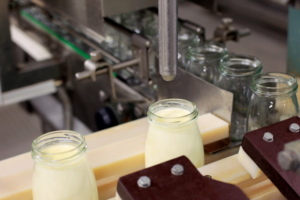
With an ERP system in place, information about raw ingredients and finished products is collected into a single database, making it much easier to access, track and trace. But you can still get burnt if your employees have to manually type in information from invoices, orders, and other associated paperwork.
Manual data entry is slow and tedious work, requiring costly manpower for relatively low-value activity. It’s also fraught with inaccuracies—ranging from simple typos and number transposition to willful neglect of data entry procedures when employees get too busy. Simply put, manual data entry from paper usually results in error rates that are too high for reliable traceability.
Automated data collection tools like mobile barcoding are designed to help employees quickly capture data with minimal effort. Mobile apps designed for food and beverage can walk employees through each step of the process for in-house materials transfers, intra-plant transfers, putting away finished products, picking products for shipment and creating shipments. Using mobile devices or barcode scanners, batch traceability information and lot numbers are captured in seconds and automatically transferred to the ERP with built-in validations.
If you’re a multinational company, batch tracking software can help ensure FSMA traceability as well as global batch traceability.
For even more accuracy and speed than RF devices, companies can integrate RFID, robotic data collection from physical automation devices like scales and carousels, or even voice-enable their
inventory operations. Studies have shown that voice enablement improves productivity by up to an additional 25% and reduces an already tiny error rate by another 90%.
WATCH VIDEO: How Caito Foods achieved flawless farm-to-fork traceability »
Traceability Survival Tips from the Trenches
Reduce risk with these food and beverage best practices:
- Do business with reliable growers and/ or suppliers. News stories about tainted ingredients have driven home the need for food manufacturers to know a lot about their suppliers. Ask suppliers about their traceability capabilities, if they have a batch tracking system, and insist on certifications and third-party audits.
- Insure against recalls. Transfer some of your supplier-based risk through insurance policies. Having accurate, accessible information in your IT systems will help ensure you get the right policy at the best rates.
- Perform regular training with employees. In addition to training about food safety procedures, offer refresher training about proper use of technology to capture traceability information.
- Conduct mock recalls. Stress-test your business processes with mock recall drills. Make sure that you can gather the information you would need to communicate in just a few hours.
- Accurate records ensure you recall enough, but waste little. The accuracy of your system for tracking and tracing products will have a direct impact on the cost of any recall.
Make traceability part of your technology processes:
- Use an ERP system. With a centralized system that can track by lot numbers, SKUs, serial numbers and more, you’ll have the ability to track ingredients through the manufacturing process and products through the supply chain.
- Employ automated data collection. Scanning a barcode is a simple, accurate, and efficient way to gather information capture large volumes of information quickly about materials and finished products. Machine-to-machine data collection and RFID add next-level automation.
- Design validity tests for incoming information. Help employees avoid mistakes by creating logical, efficient workflows that include tests to prevent bad data from entering the system. For example, you can set up your mobile software to prevent employees from entering a lot number in the warehouse that hasn’t been created in the ERP system.
- Use your IT systems to perform timely product holds. Use your ERP and mobile inventory solution to ensure that batches and lots being tested for quality or safety are held in the warehouse until results are available and then released quickly for shipment and sale.
- Give your customers the information they need. License plating makes it fast, efficient, and easy to provide retailers with complete information about country of origin and other product attributes.
If a recall happens:
- React immediately. Unlike other types of products, with food safety, there is no time to lose. Products are consumed soon after they are purchased. You need to be able to trace your products in just hours—not days.
- Be forthright with information. Customers admire honest companies that act selflessly on the customers’ behalf during a recall. Protect your brand’s integrity with full disclosure.
- Get it right the first time. Issuing multiple recalls can do more damage to your brand, so recall everything that’s defective on the first try. Traceability software will help you pinpoint recalled products to avoid unnecessary losses.
Additional Food Traceability Resources
Recall and Safety Alerts:
- Recalls.gov—all current U.S. government-issued product recalls
- Recalls.org—recalls in the U.S., Australia, Canada, European Union, Great Britain and New Zealand
- Canadian Standards Association—recalls and product alerts in Canada
Industry News:
- Food Safety News—leading content provider of science-based solutions for food safety and quality assurance professionals.
- Quality Assurance Magazine—written for managers and professionals in the food and beverage processing industry with a specific focus on food safety, quality, and defense.
- Food Logistics—information for executives involved in various aspects of the global food, beverage, and consumer packaged goods supply chain.
Final Thoughts From the Experts at RFgen
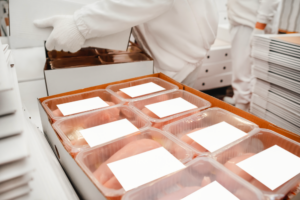
There’s a lot at stake for companies participating in the food and beverage supply chain. Food safety is of paramount concern and there is a big regulatory push for more accountability in global food supply. In the U.S., Article 204 increases the requirements for additional traceability records for certain foods.
Because recalls need to be swift and efficient, traceability cannot rely on manual processes. Food companies need a mobile inventory solution with automated batch and lot number tracking. Additionally, mobile barcoding software can enable employees to accurately record every movement of food, including raw materials, production, and outbound, even in high volume.
Better supply chain traceability systems drive more efficient recalls. Rapid access to reliable information can reduce the duration and total cost of the recall, minimizing product waste, lessening potential litigation risk and lowering the likelihood of lasting brand damage in the eyes of consumers.
To learn more about gaining batch food traceability for FSMA 204, contact our experts and find out how manufacturing traceability software can make it happen.





